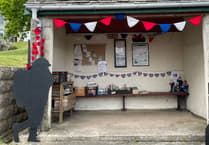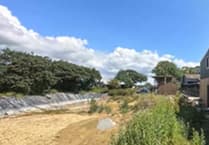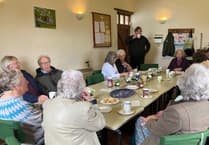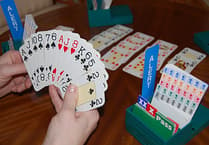Present day Penally derives its name from the Welsh Penalun, Alun's Headland. The village is situated within the boundaries of an ancient landscape which comprised a number of small early settlements from a period of the sixth century, when the region was ruled by a native king and formed part of the Celtic Kingdom of Dyfed.
Its living history truly commences about 10,000BC towards the end of the Ice Age, when nomadic hunters arrived following herds of wandering animals which formed part of their main diet. On the outskirts of the village is situated a complex of caves known as the Hoyles, where several exciting archaeological excavations have revealed the bones of a variety of extinct animals and relics from the Palaeolithic, Neolithic and later occupations.
At the nearby Longberry Bank, recent excavations suggest evidence of an important settlement of an unknown family of royal status who resided here during the sixth and seventh centuries. Artefacts unearthed include fragments of delicate coloured glass and pottery imported from France and the Mediterranean region. Further indications also reveal the workings of iron and other metals at the site and an assortment of bones suggesting that feasts were held here.
The area's nearness to the sea ensured regular communication with neighbours in these islands and beyond to Brittany etc.
Penally played an important role in the early Christian period of Wales, traditionally being the probable birth place of Saint Teilo, the burial place of his family and nephew, the martyr Saint Tyfai. The church is one of a number of mother churches of Wales, stemming from the practice when saints set up a church or monastic cell that would have carried their name.
There was a monastery here from the sixth century to the 12th when it was disbanded. The present Anglo Norman church, dedicated to Saint Nicholas, was completed in the 13th century. It is thought to occupy the site of an earlier church. In 1327, the church was granted to the prioress and convent of Aconbury, an Augustinian order. They left Penally in 1535, during the troubled reign of Henry VIII and their rectory here was closed.
Within the church is a fine early Celtic cross, Norman font and altar tomb. Visible from the castellated church tower is the church of Saint Mary in the nearby walled town of Tenby and the monastery on the offshore island of Caldey, an important link in early troubled times. Not far from the church, in the grounds of Penally Abbey Hotel, is a ruin known as Saint Deiniols Chapel; it has an associated holy well.
Penally is situated within a wide ring of several Norman castles and minor strongholds. The village escaped the turmoil of early times, though during 1664, when the county was divided in civil war, its manor house was attacked and its royalist defenders given short shrift.
The area's close proximity to the coast has witnessed in the past piracy, smuggling and the usual wrecking which was prevalent around the Welsh coastline. One notable visitor at the end of the 18th century was the American pirate Paul Jones who anchored offshore near Caldey with his 40-gun frigate.
The area has always been dependent on the mixed fortunes of agriculture and coastal trading, but from the latter part of the last century tourism has played an increasingly important role, for which it is well suited.



